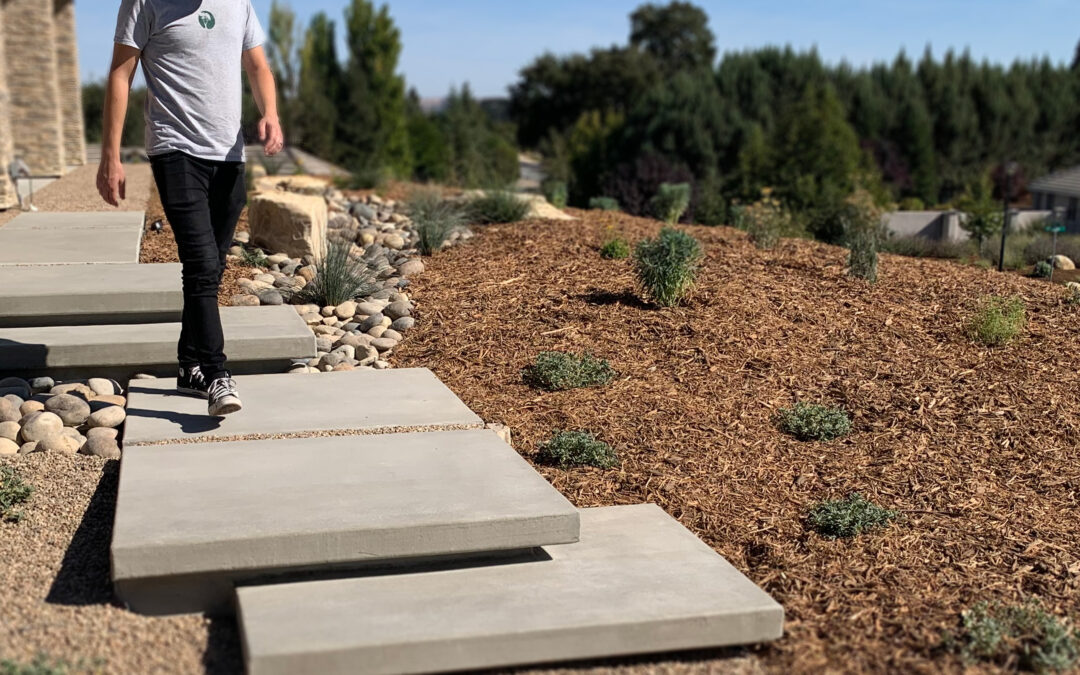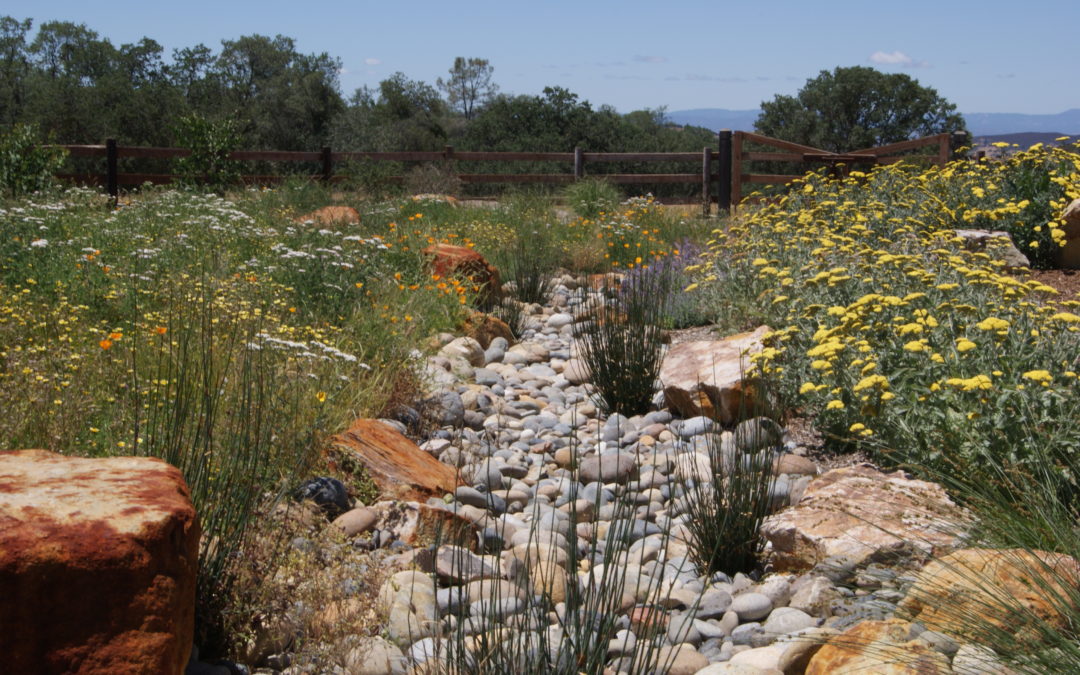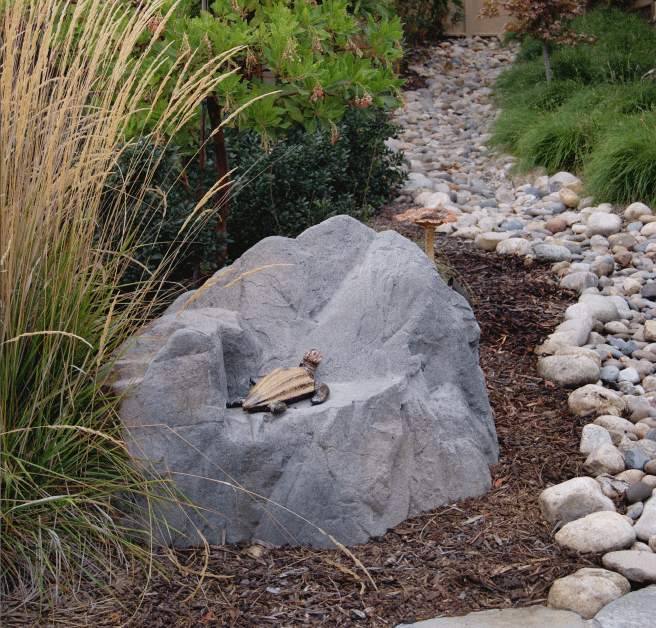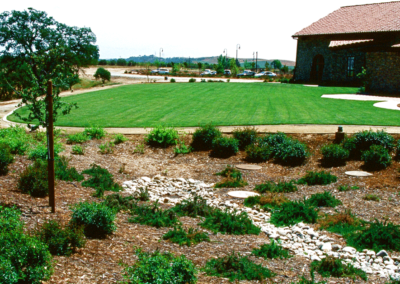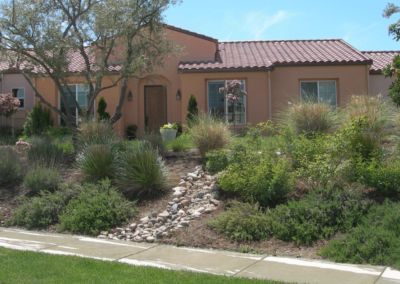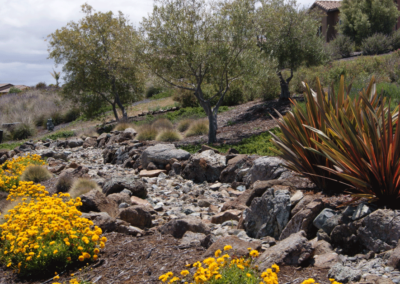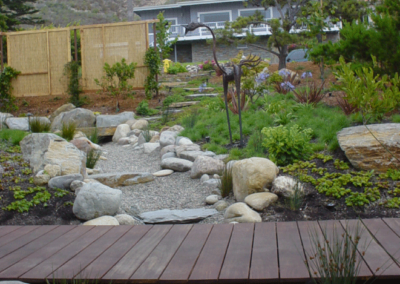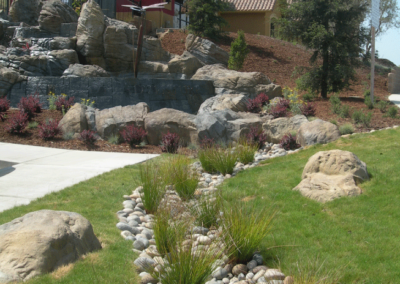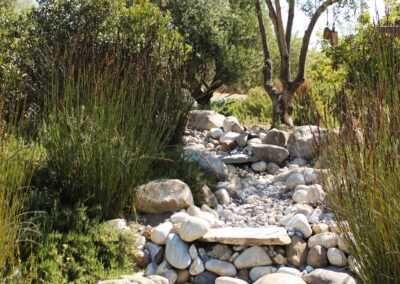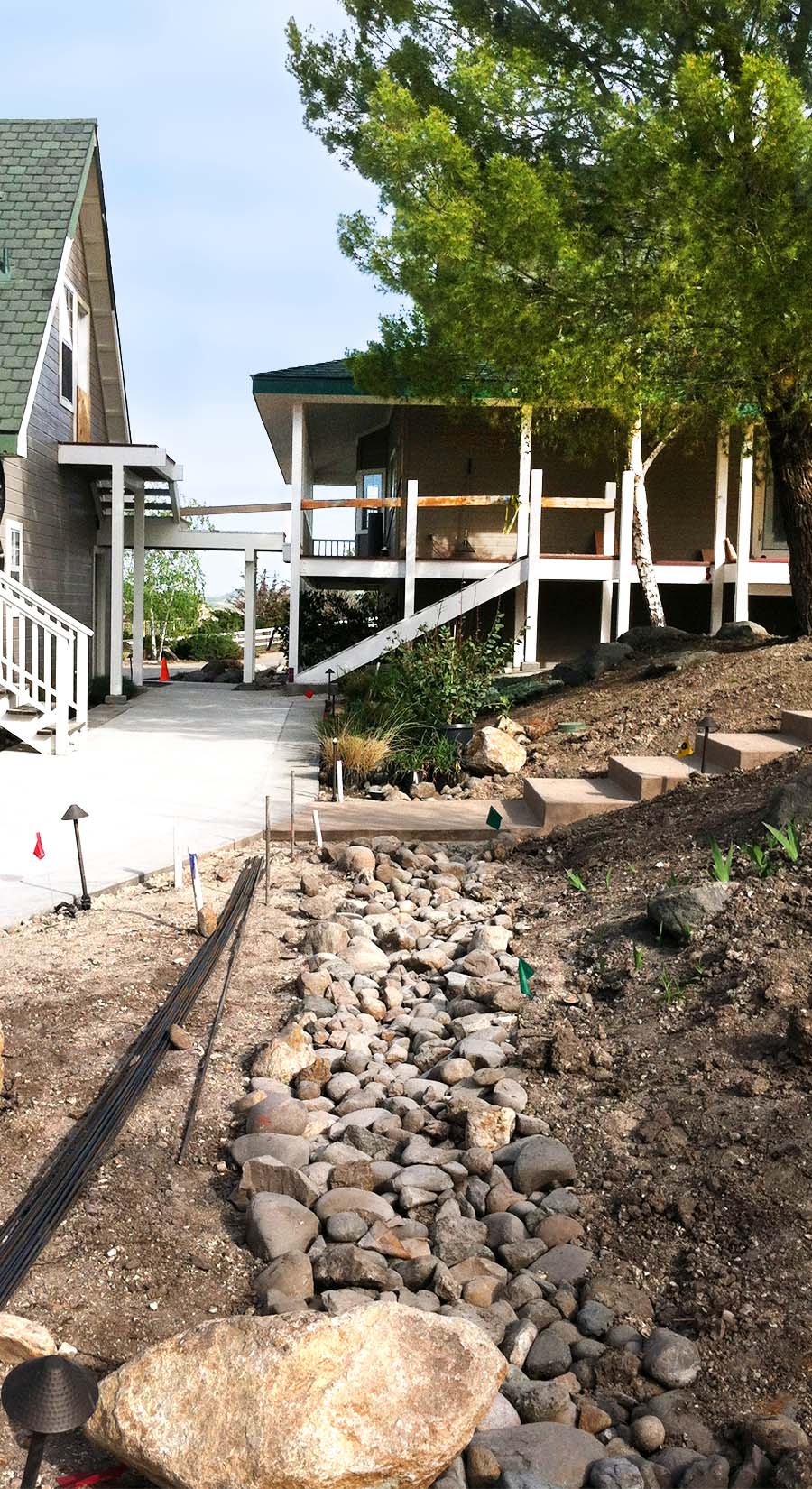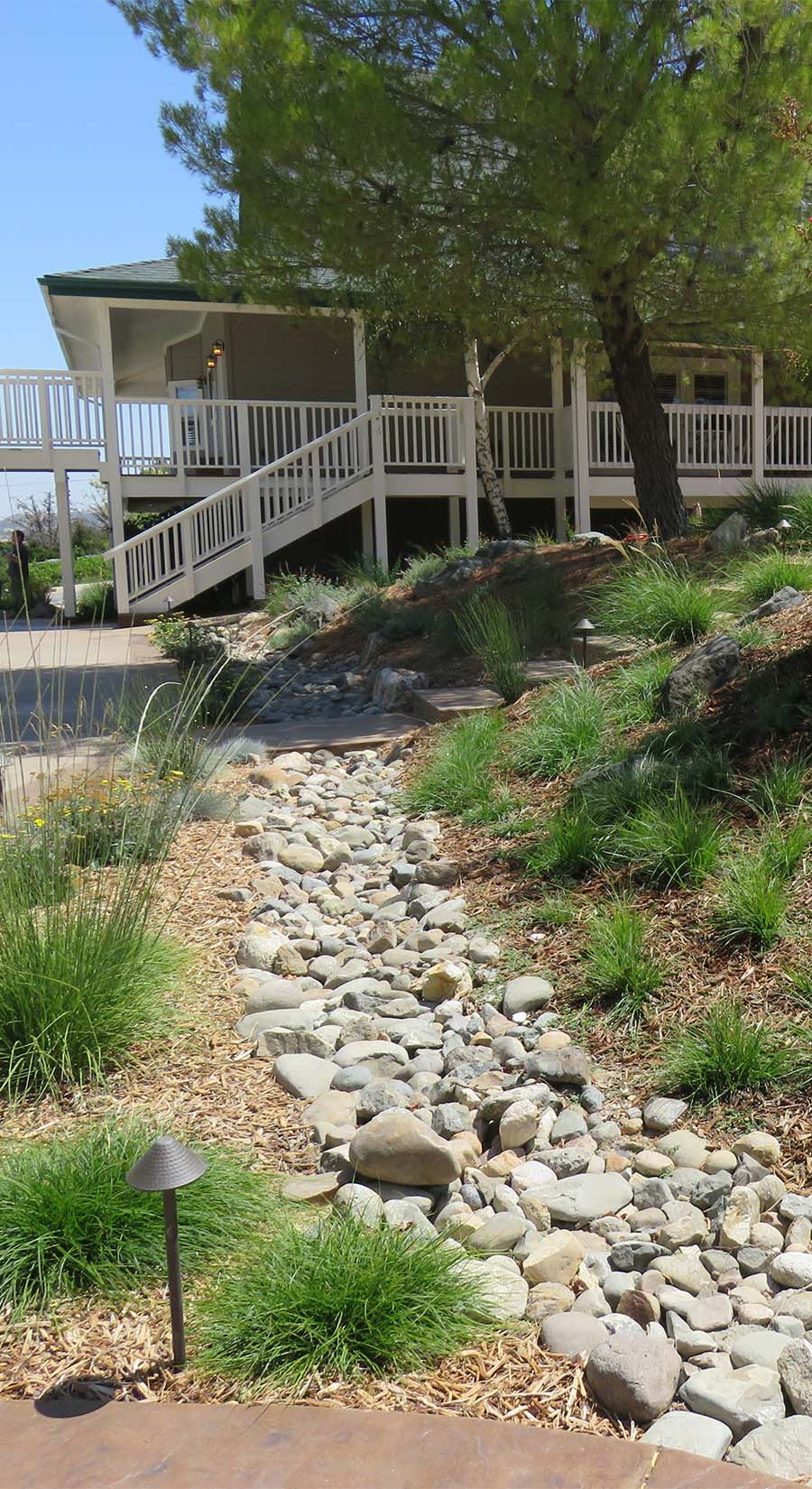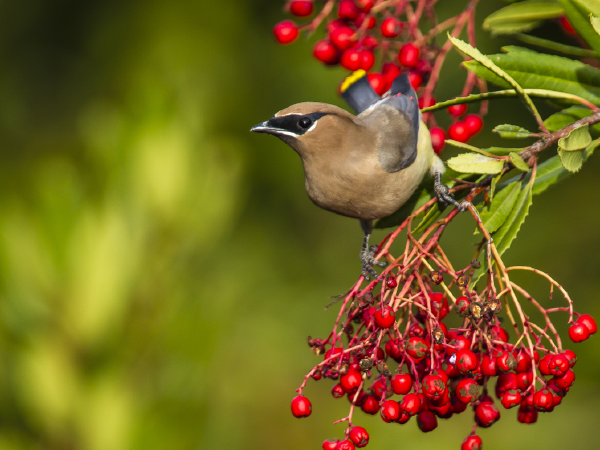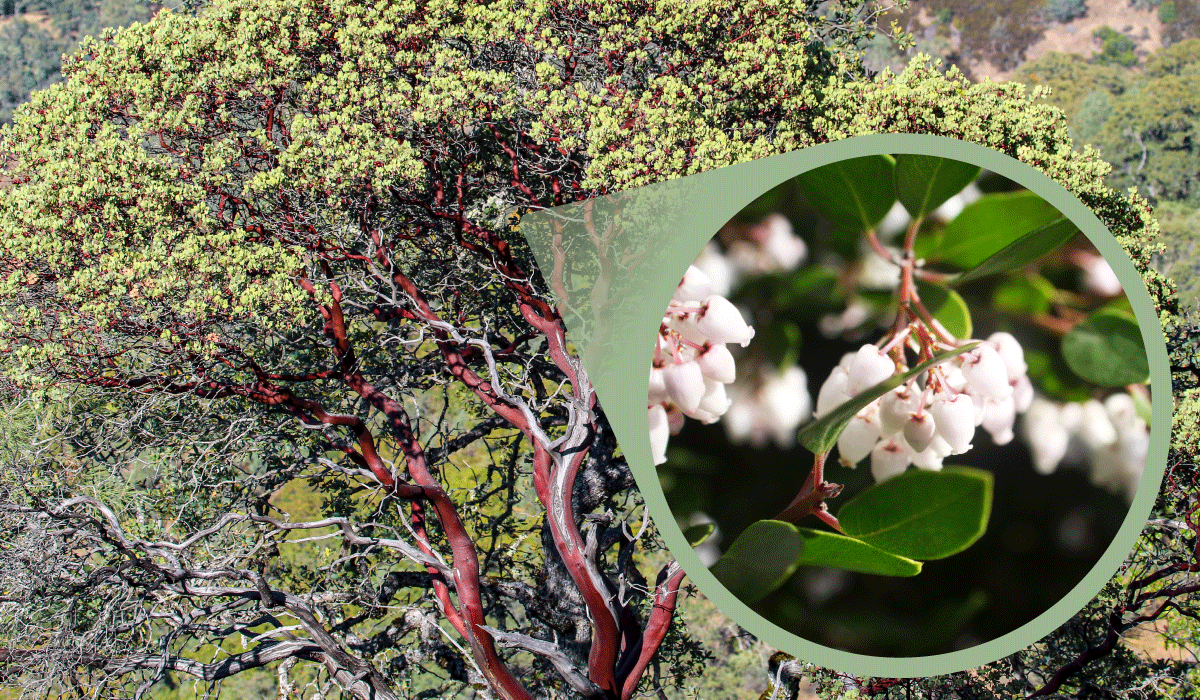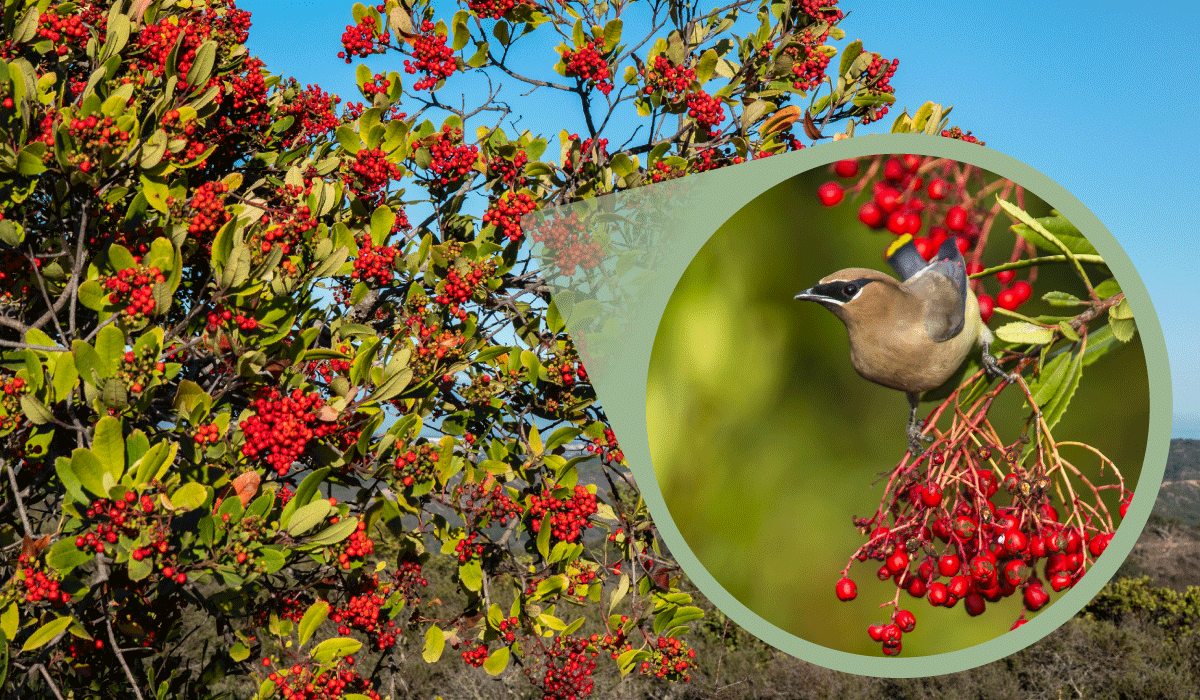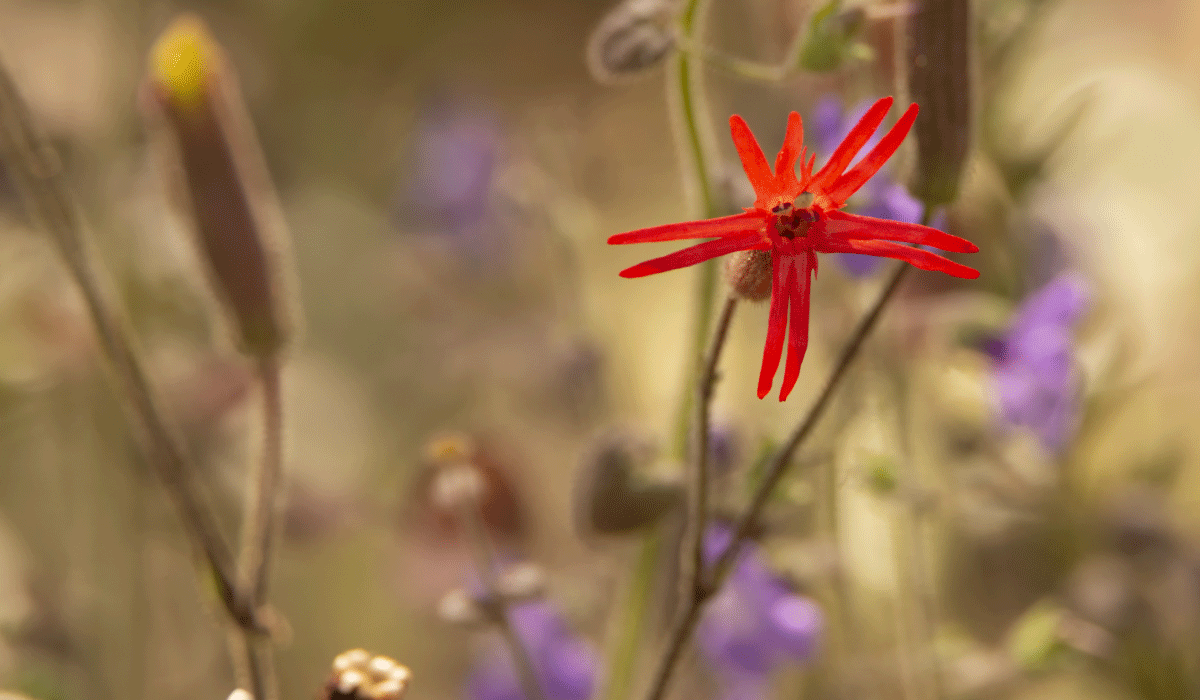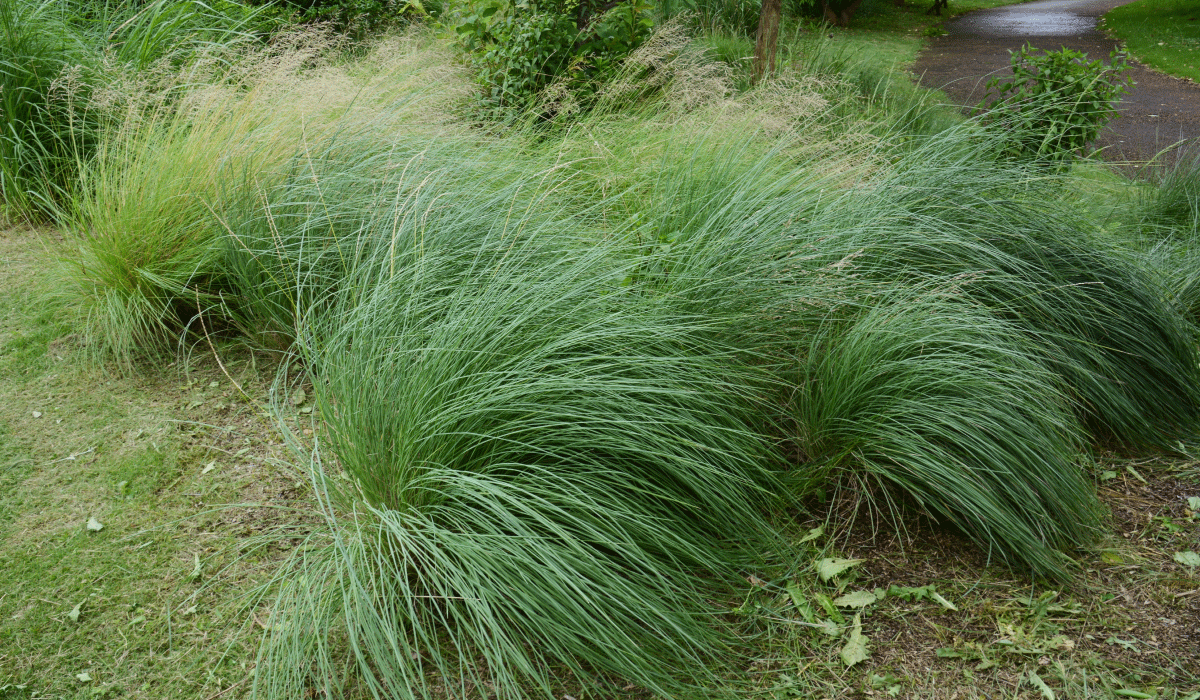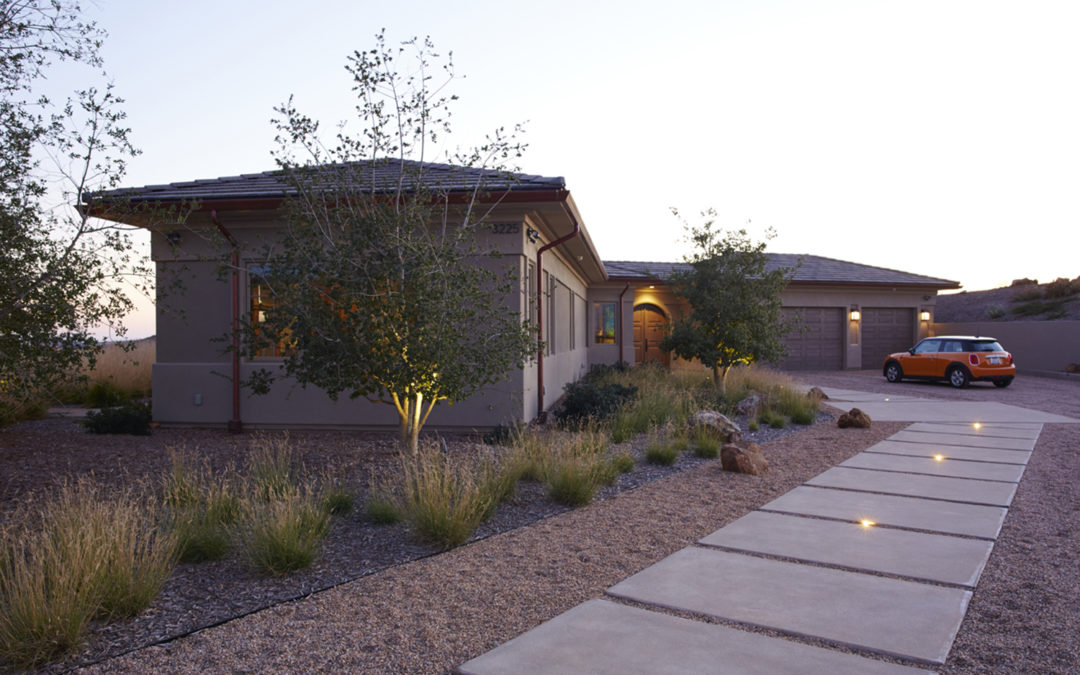
Five Ways to Light Your Landscape
Guidelines for Illuminating Your Outside Living Spaces
When choosing outdoor landscape lighting for any area, first think about how you will use the area. Do you want to see an ambient space out your window? Does it need to be easily walkable at night? Will you be holding al fresco dinner parties? Would you like an open-air dance floor? Do you want a cozy nook for a nightcap around a fire pit?
If you have one activity in mind, you can keep the lighting simple with a single switch for all lights. If you want to use your space for several activities, you may want options. To diversify your landscape lighting, you can arrange it into different switched zones, creating flexibility in how the space feels at night. Here are five different ways to customize the lighting for your outdoor spaces.
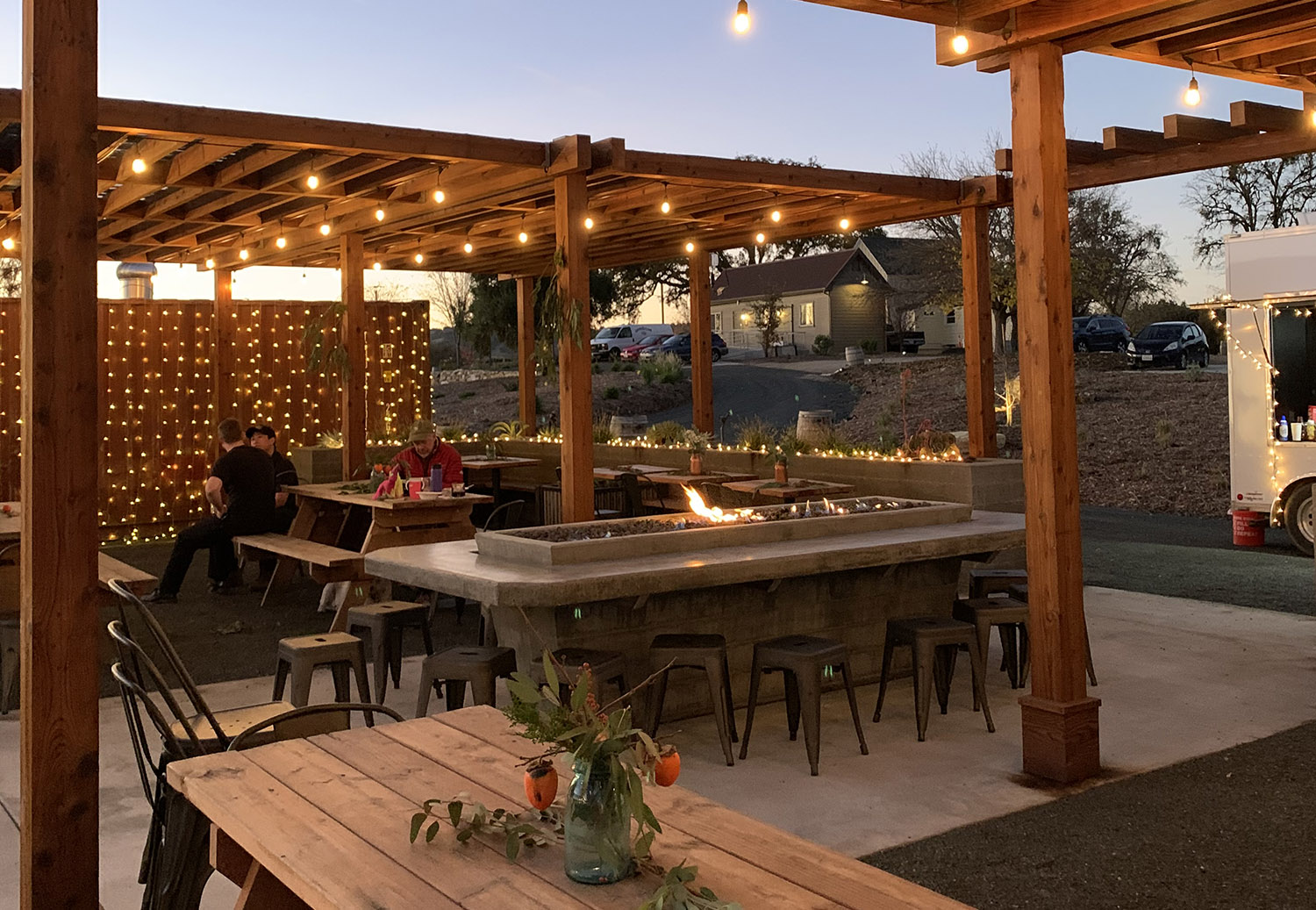
1. Provide Functional Light
In ancient times, sailors preferred dim light to eat their hardtack in ship galleys to avoid seeing their not-so-enticing food. Nowadays, you will likely want to show off your entire spread, and see your guests. Downlights, or directional spotlights with bright light, can be mounted on pergolas, walls, or trees to provide light directly to a table. For these zones, it is essential to provide more lumens with higher wattage lamps.
Suppose you want to provide illumination for safe walking. In that case, you can use path lights elevated on posts to cast broad light over walking surfaces. It is imperative to provide clear, direct lighting to stairs and precarious edges of patios. If you are building a new space, you can put recessed lights in the flatwork and riser lights in steps to provide illumination right where you need it.
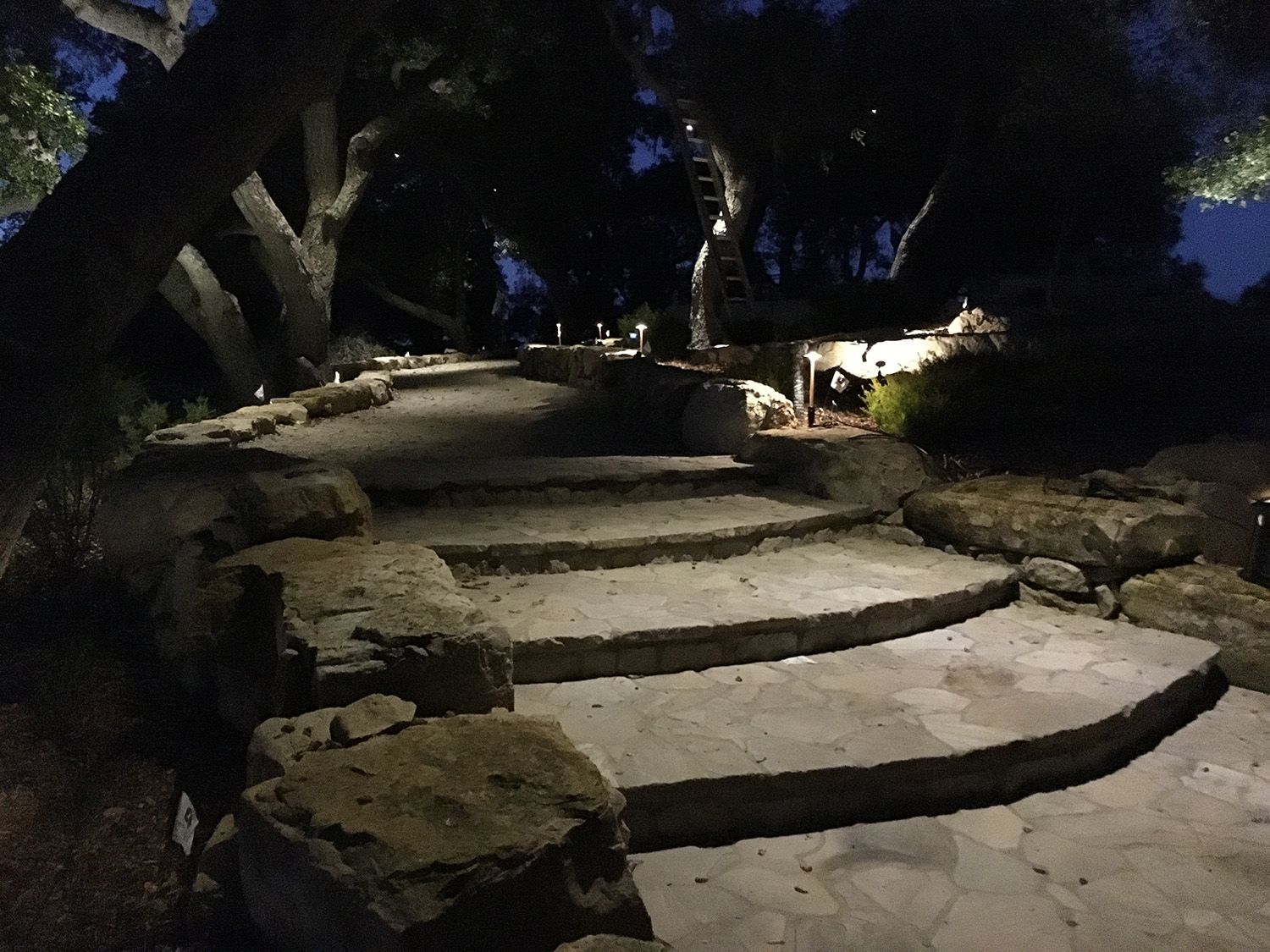
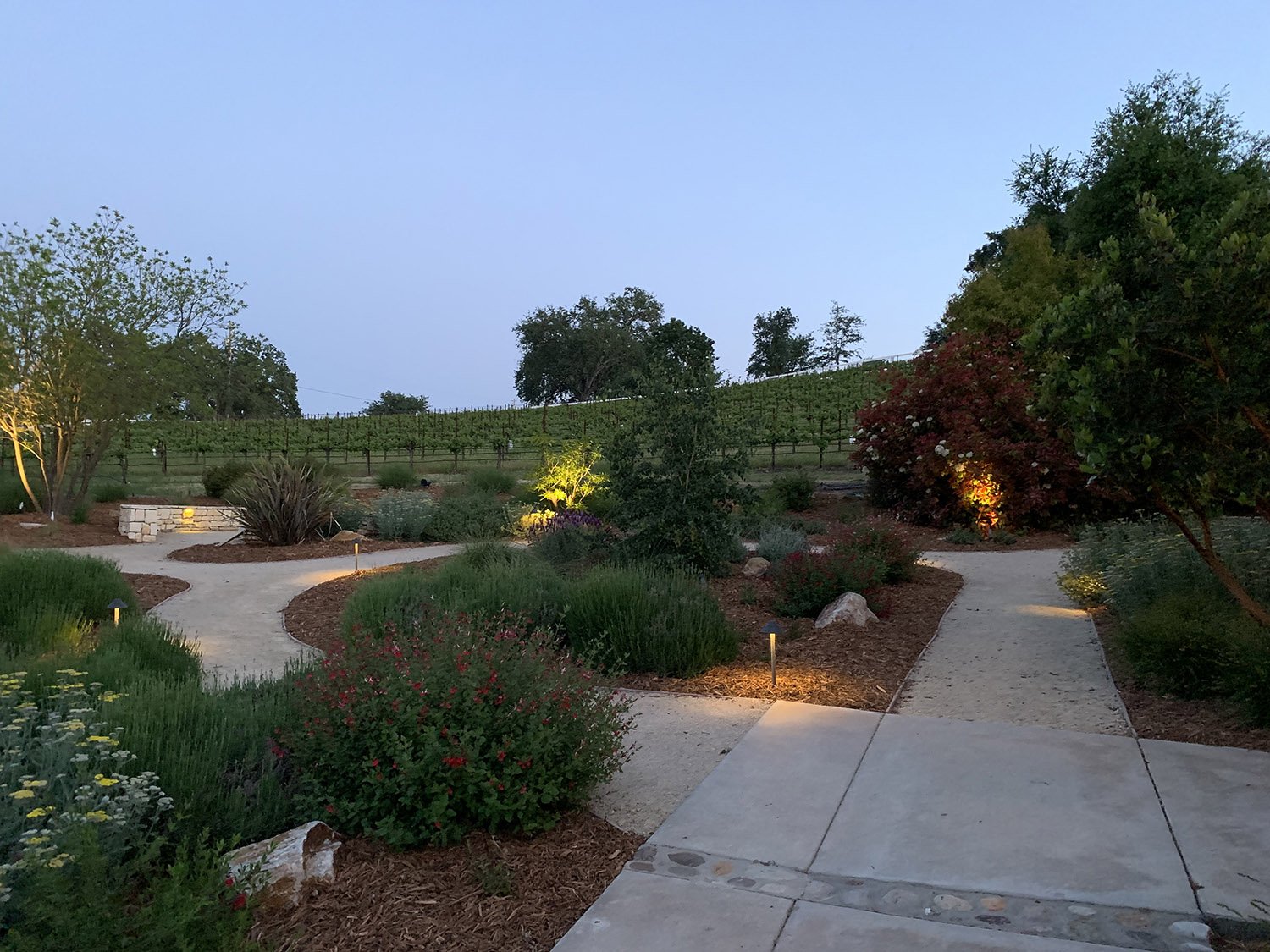
2. Define the Edges
Lighting the edges of your patio or the adjacent landscape can be for function or ambiance. Sometimes it is nice to look out the window and see orderly lighting on the edge of a patio. It will make you feel comfortable by extending your visible perimeter when you hear a spooky sound outside. In addition, you can light objects in the landscape adjacent to the patio, such as boulders, art, tree trunks, or plants. This periphery lighting makes the space feel safe and defined even if you aren’t lighting the patio itself.
Here are three suggestions for using lights to define edges:
- Place path lights or recessed lights on the edge of the paving.
- Use broad-beamed wash lights to illuminate boulders and low plants for low detail textures and colors.
- Position narrow directional beam-up or spotlights to focus on art pieces, tree trunks, or specimen plants.
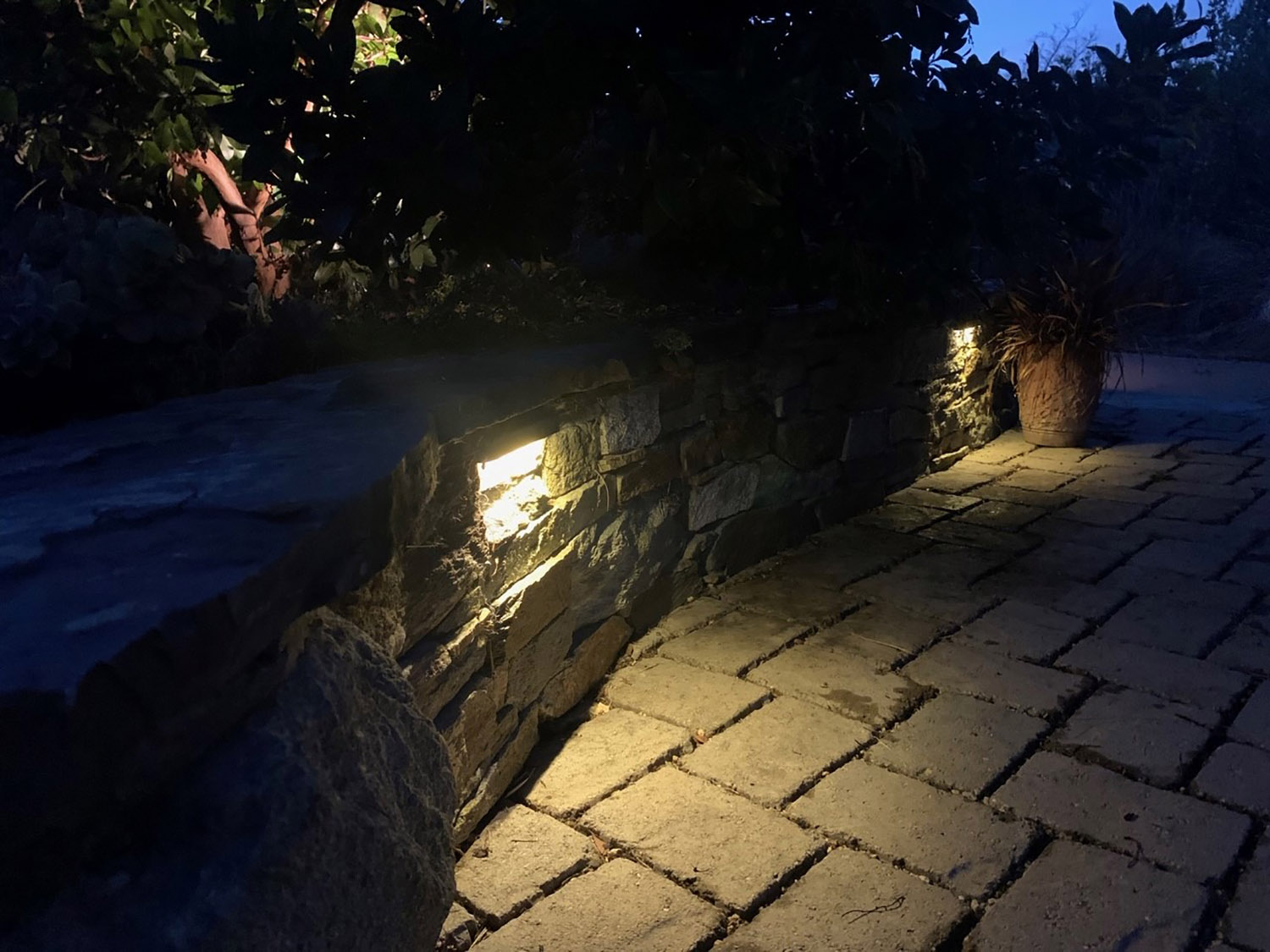
3. Create an Outdoor Room
It is remarkable how a patio can feel open and exposed in the day but warm and cozy at night with proper lighting. Walls and ceilings at proportionate heights create comfortable spaces. Ancient Greek architecture used the golden ratio of 1:1.61; create a restful and secure-feeling patio space with a width 1.61 times wider than the perceived ceiling height. As a rule of thumb, you can strategically light things to make the area feel a bit wider than it is tall. Use whatever is around – trees, bushes, walls, pergolas, fences – to emphasize this feel. Lighting a few select features will cause your mind to connect the dots and feel the geometry of a room you have created.
Trees are great for this use because you can uplight the trunk to create a wall and feather the light into the canopy to define the ceiling at the right height. Built structures like pergolas are beneficial because they can be customized and provide opportunities to uplight, downlight, or create wall or ceiling light patterns.
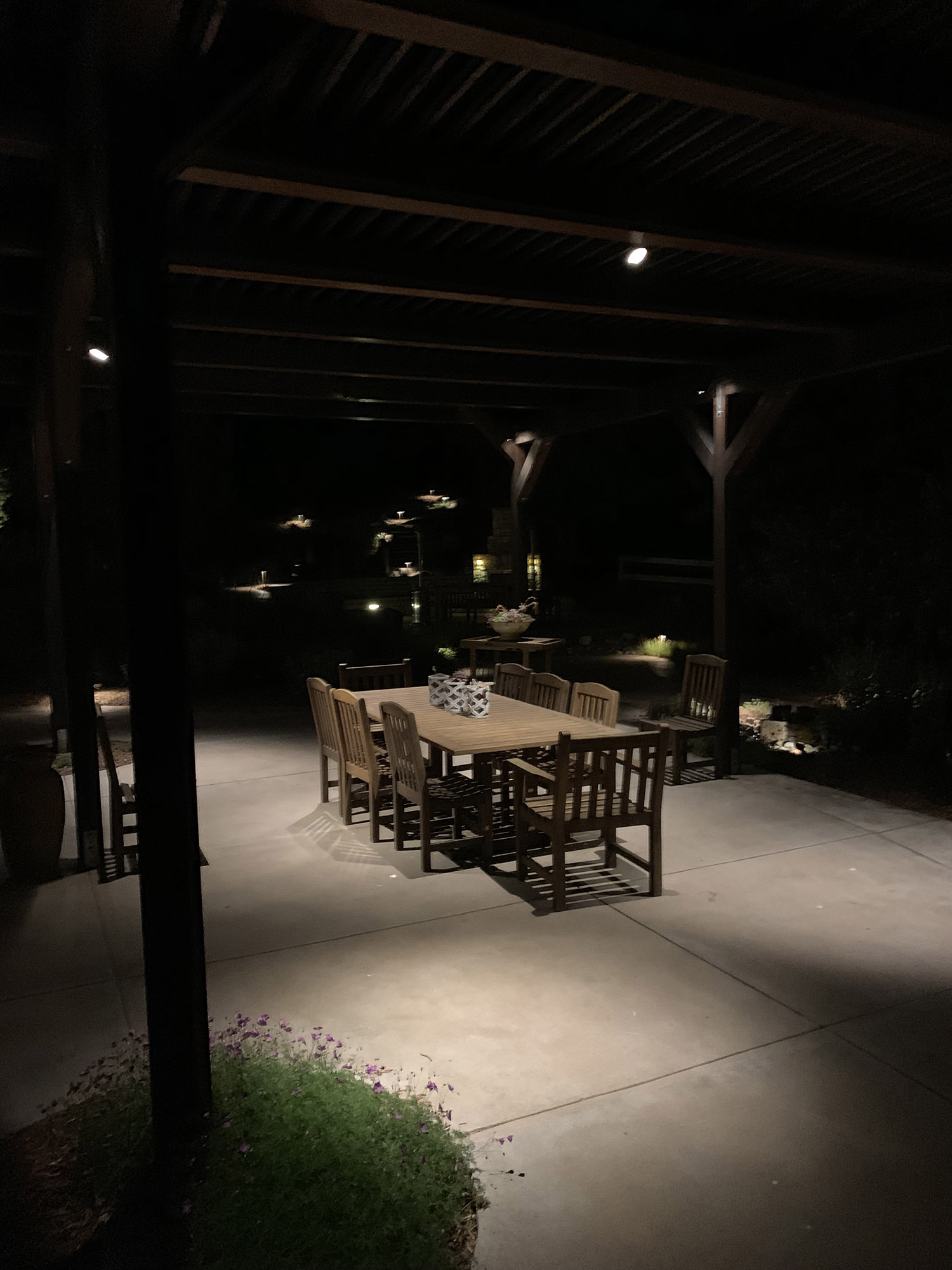
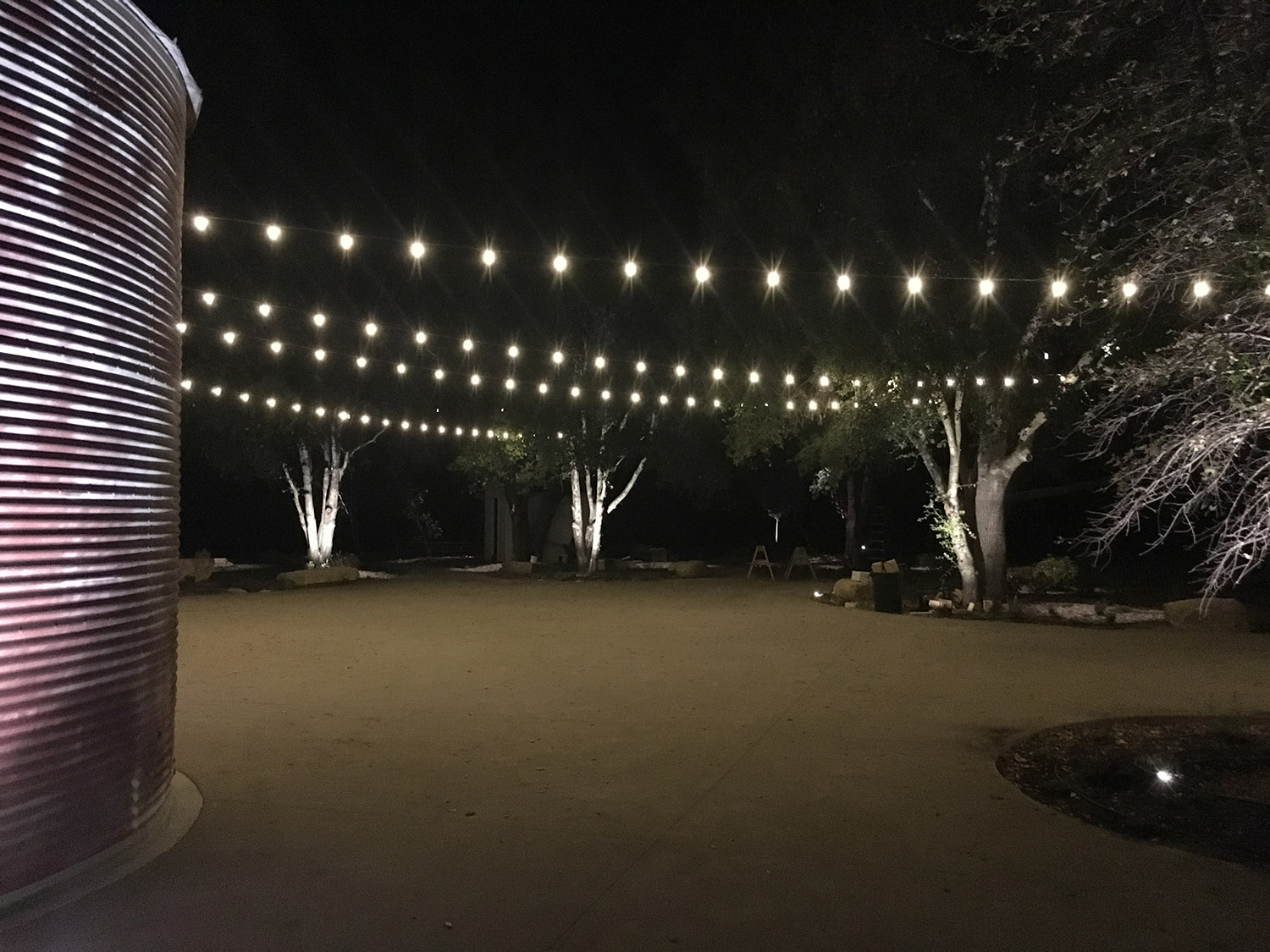
4. Create Ambiance
People often say they want low lighting to create an ambiance in their yard. This is not the light for eating your dinner, but it can be stunning in its simplicity. As mentioned before, lighting edges can really create a cozy feel. You can also extend your visible perimeter to more distant features such as trees, plants, art, or even barriers. Use wide angle wash lights to make secluded shrubs and boulders glow. Use directional narrow angle lights to illuminate focal points. For example, a red barked multi trunk tree can be up lit to create a mesmerizing floating warm glow in the distance. You can arrange a line of lights on an isolated or remote hedge or wall to define a wider perimeter of visual space to feel more secure in a brighter lit patio. Moonlights, or hanging pendant lights, can be set high in trees and create a whimsical moonlit forest feel. These are even more stunning if set over a branch to create a shadow pattern on the ground.
Keep in mind that the color of things you light will permeate into the ambient light in a space. You can focus on greens and cool tones to create a calm space. You can focus on reds and warm colors to create a warmer, cozier light. You can also choose warmer or cooler tone lamps/bulbs by using the kelvin rating (A low rating of 2700k is yellow and warm, and a high rating of 4100k is bright white).
And don’t forget the ever-popular bistro lights. These typically low wattage bulbs dangle from strings stretched overhead to provide full area illumination. Bistro lights can be great for a party area because they light the entire zone with semi-dim light. Like a dim bar experience, you may not be able to see your food perfectly, but it is a very nice ambiance for a dance floor or casual hangout. When arranging string lights, consider the density of bulbs for even lighting. Also keep in mind that you would like these strings to look okay during the day, so create intentional patterns and avoid tangled webs. Use built structures, poles, or trees to secure them at a comfortable height.
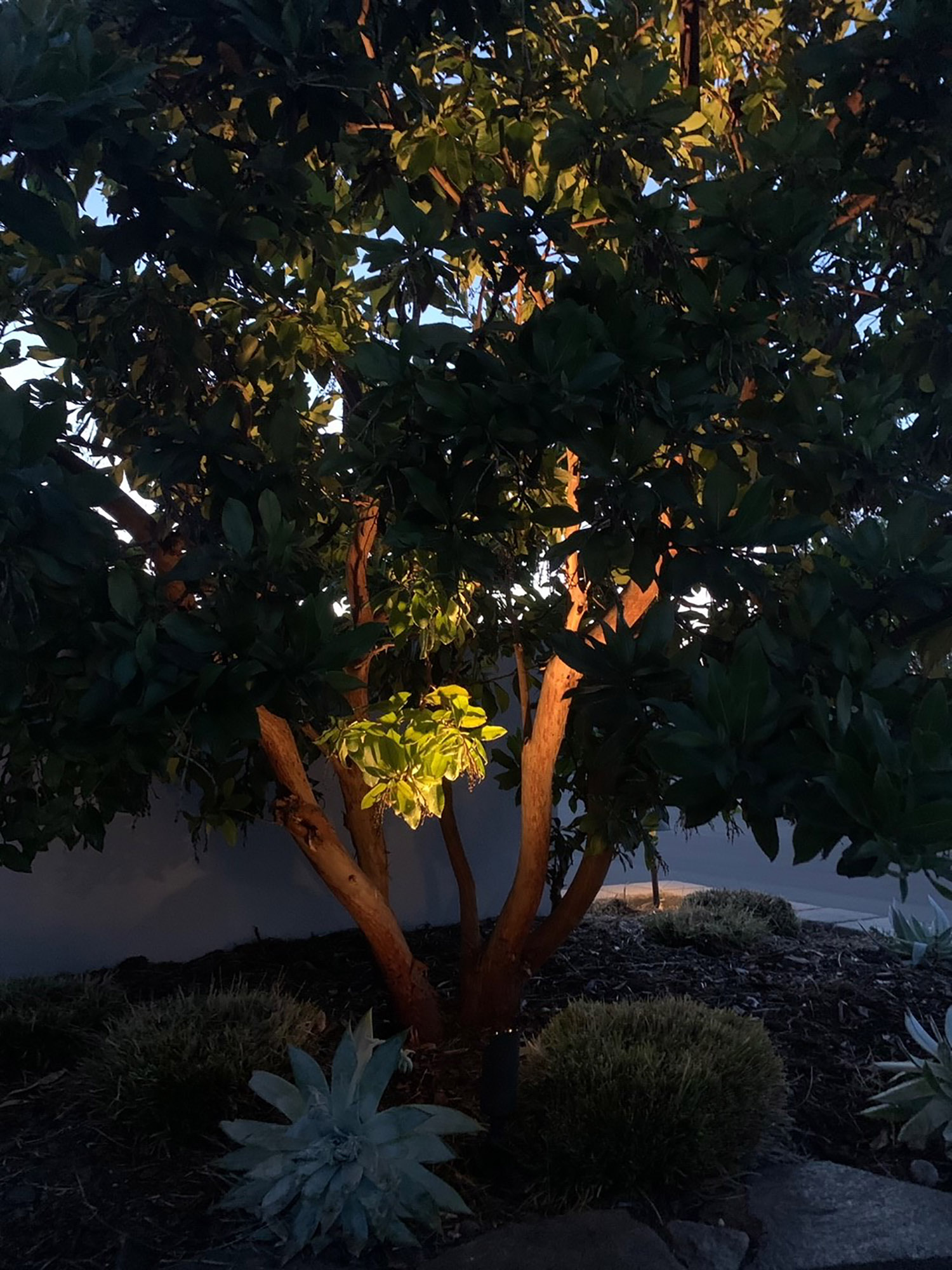
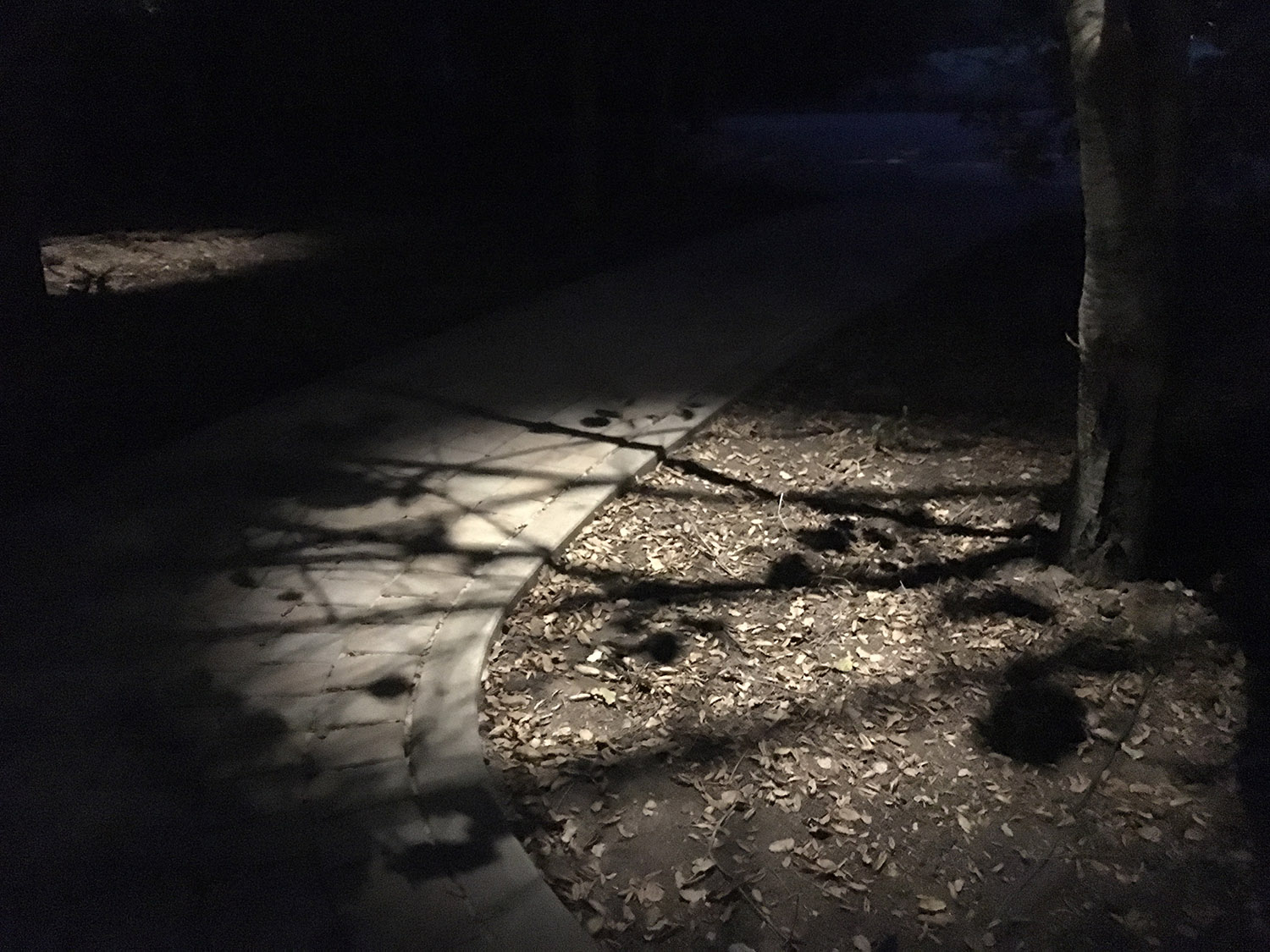
5. Display Artistic Patterns
These days there are fixtures suitable for creating patterns on the ground, walls, and ceilings. When creating defined designs for a contemporary look, it is essential to map them out with a measuring tape. You are usually working with fans of light over a flat surface. In some cases, you are illuminating things that were already installed in an orderly fashion, like equally spaced trees or wooden posts.
You can use recessed lights in patio flatwork to shoot low fans of light from a central can fixture. Often these have 2, 3, or 4 radiating fans of light that can create a geometric pattern on a ground plane. You can use sconce lights on walls or wall columns to create equally spaced downward or upward fans of light. Some sconces have both up and down light to create an hourglass light pattern. When lighting existing trees or built structures that are already equally spaced, use directional spotlights to create a uniform rhythm. For example, fences usually have equal spaced posts and panels which can be lit by narrow or wide angle up lights, respectively.
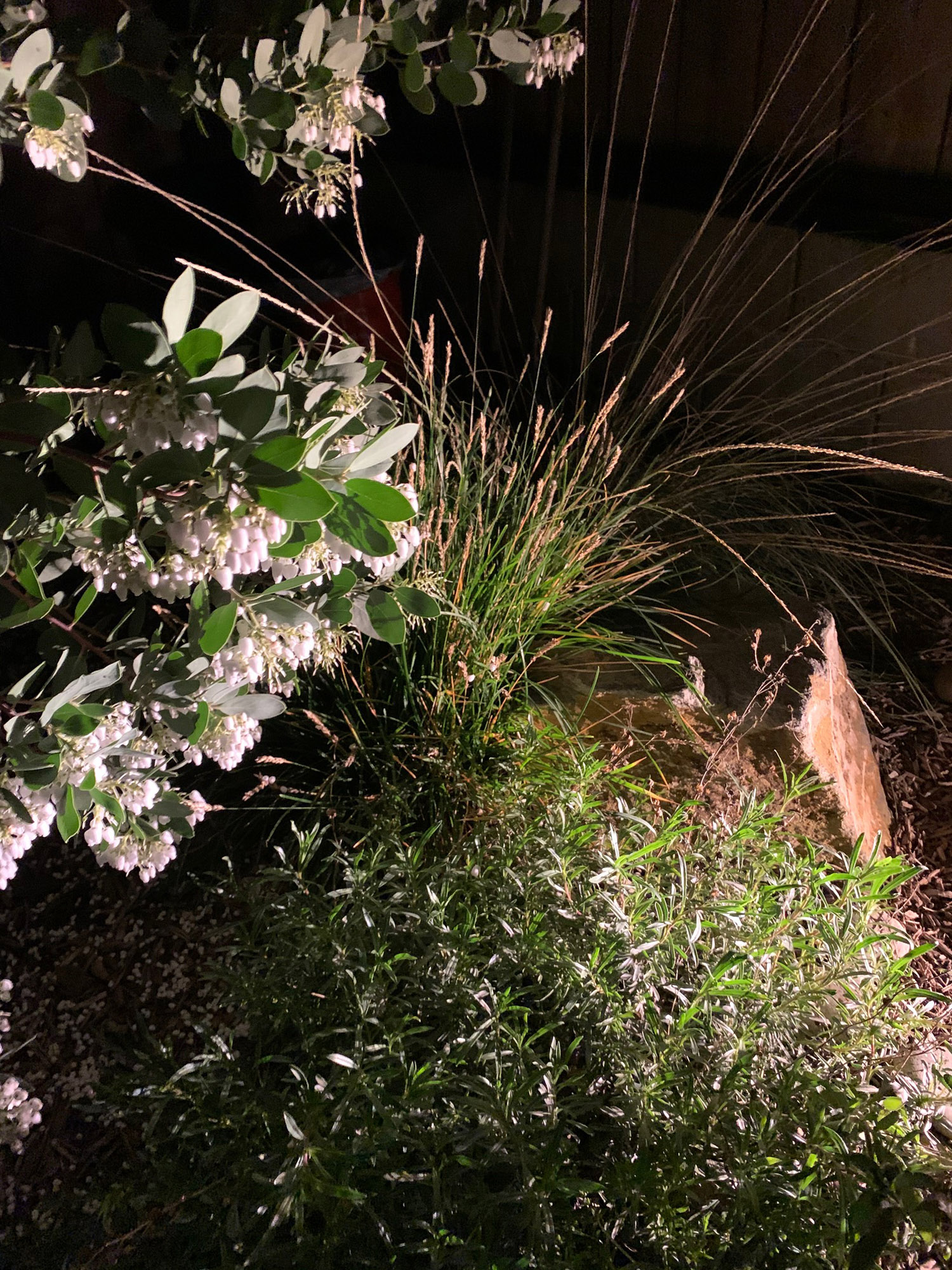
Mix it Up
As you can see, these five techniques are not mutually exclusive. Choose what works best for you and your space, and light it up! By using one, two, or several, you can make your outdoor areas come alive at night.
Ready for a landscape lighting design and want to talk to a professional? Contact our landscape designers at [email protected] or (805) 466-6263.

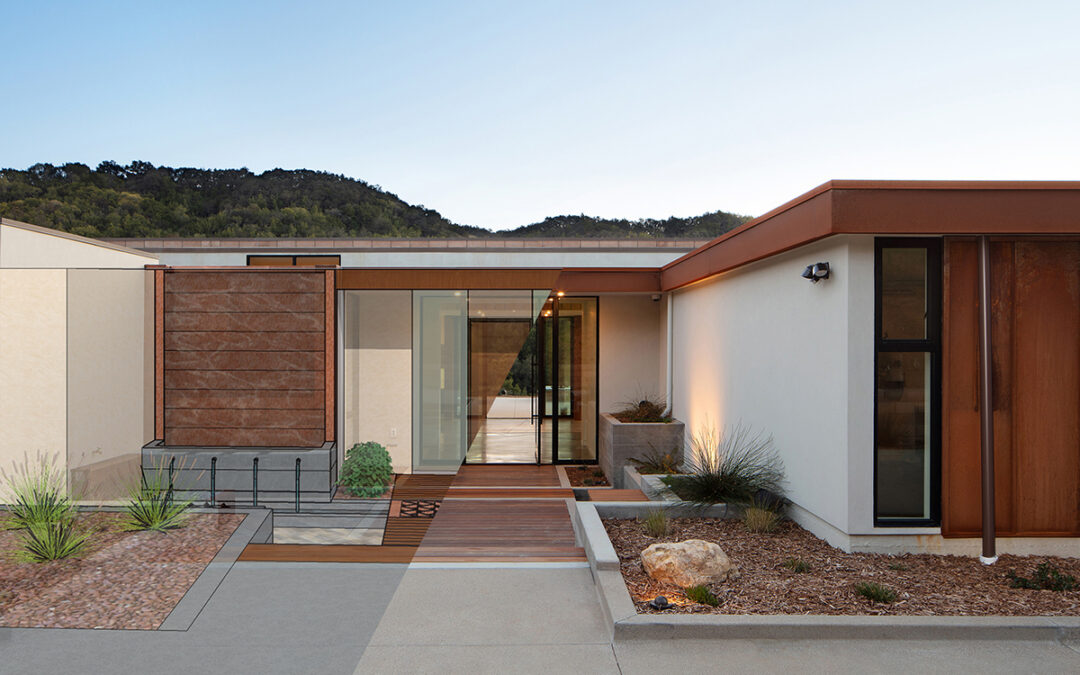

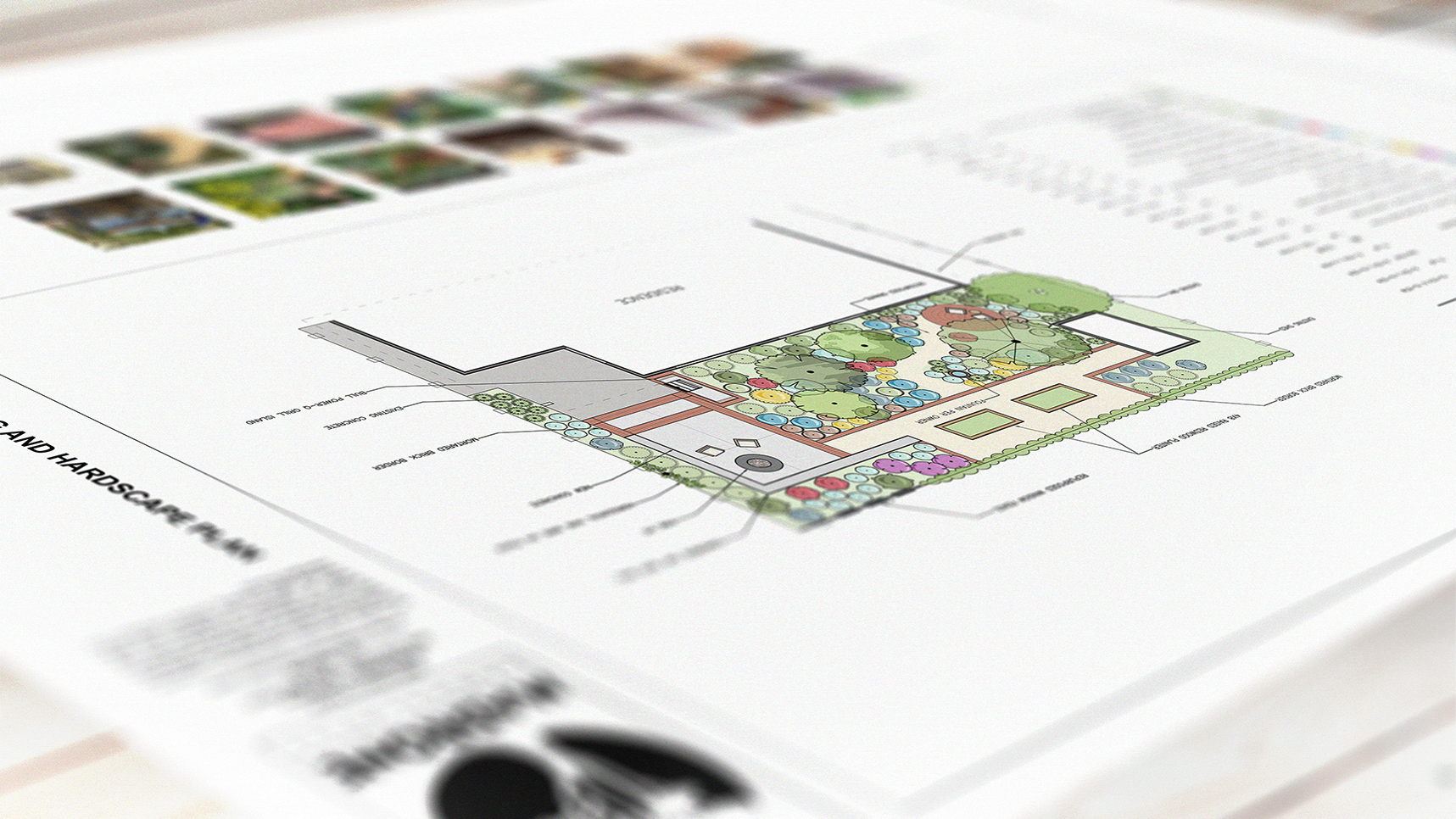
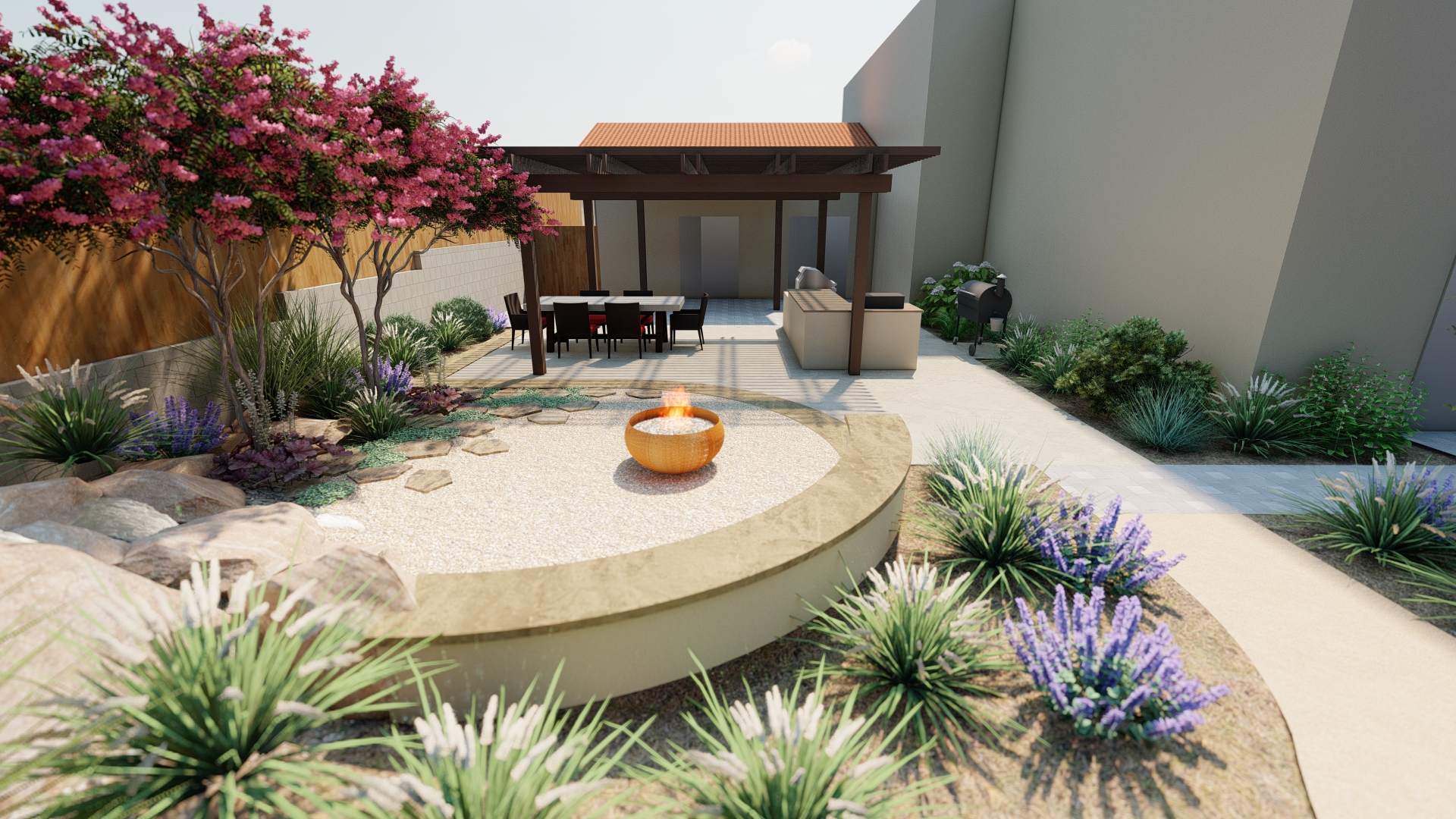
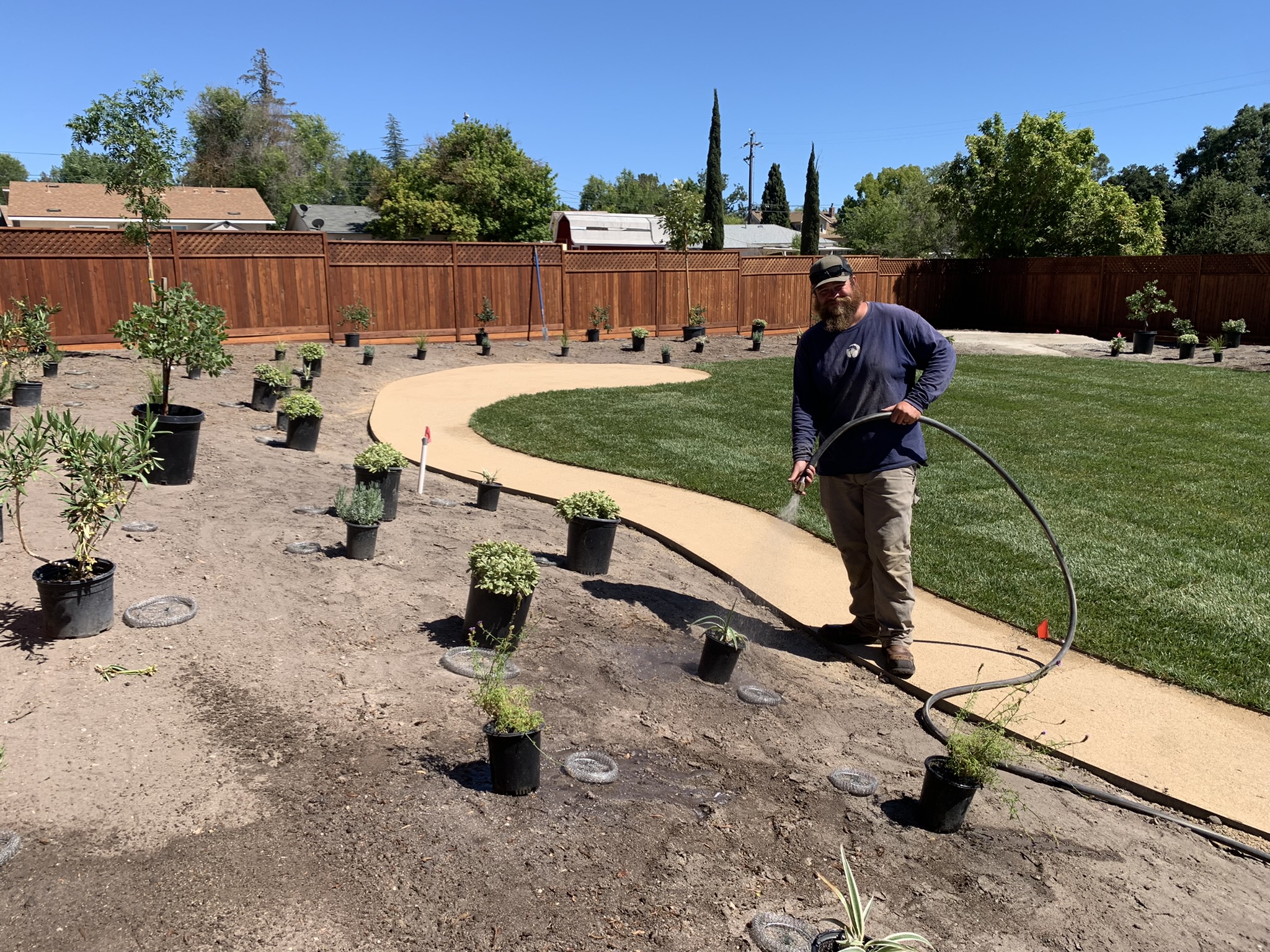

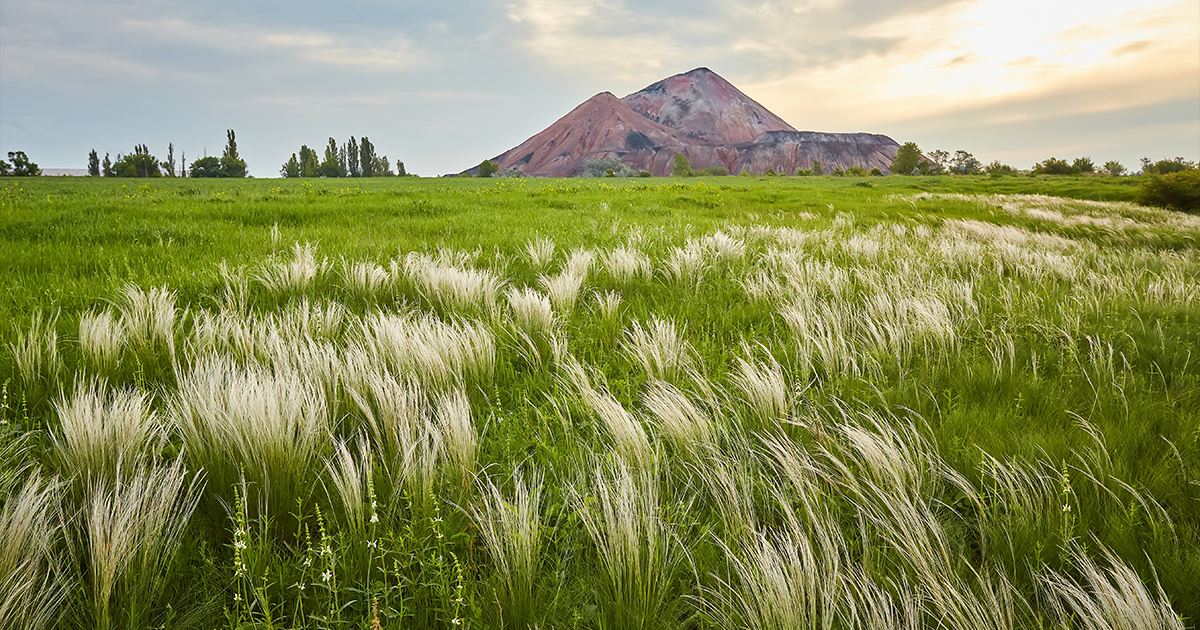
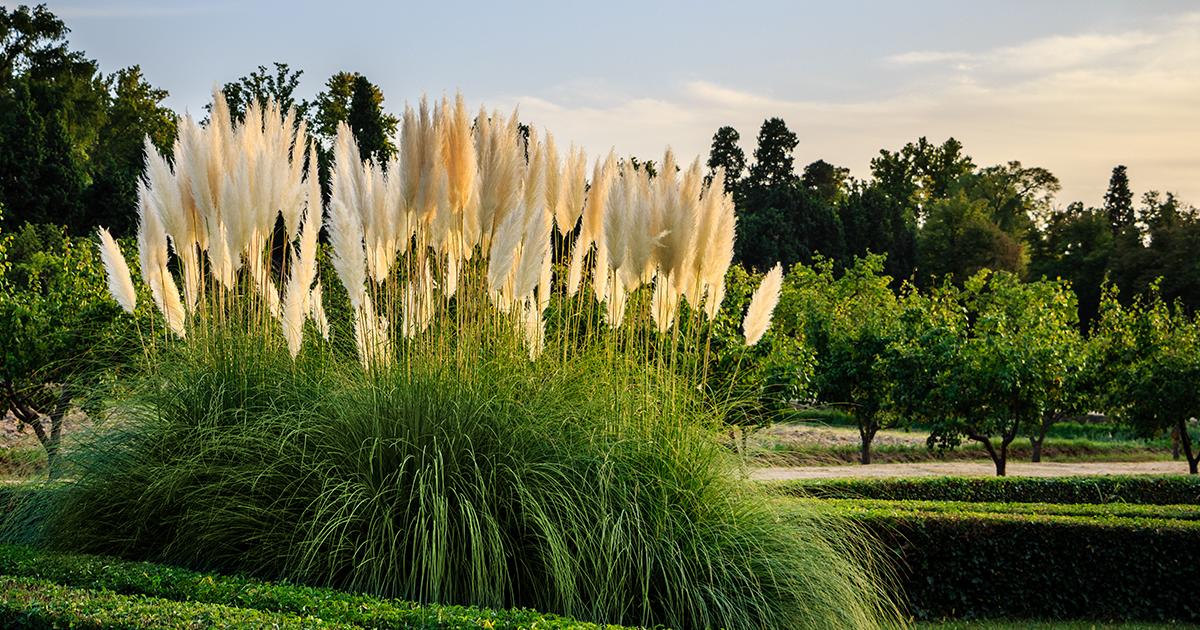
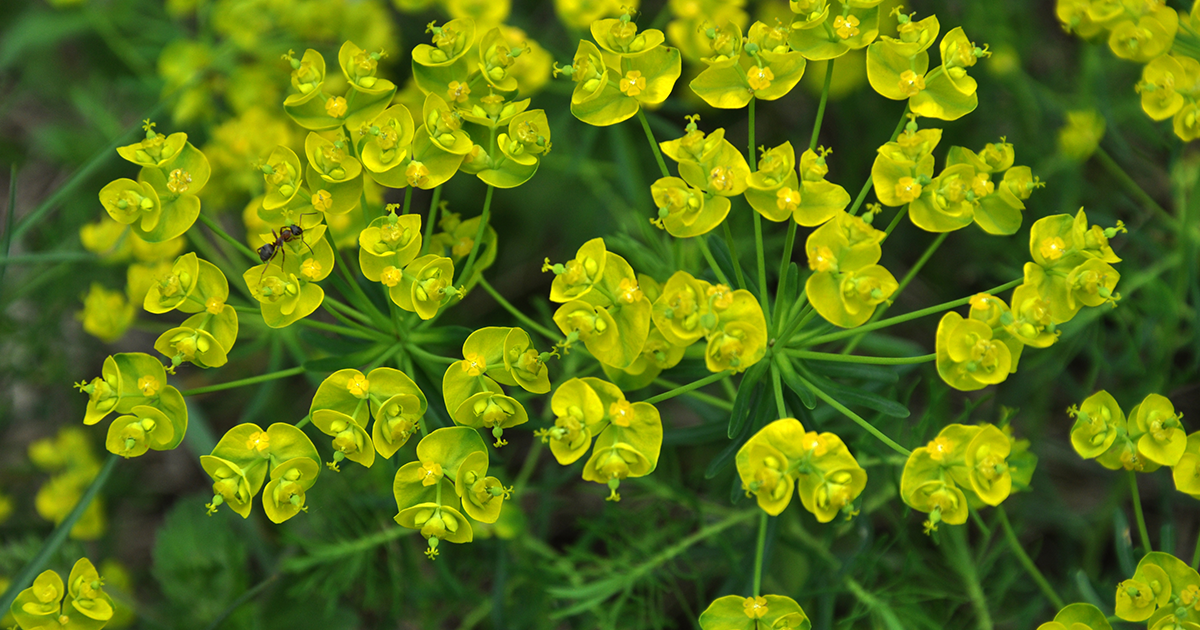
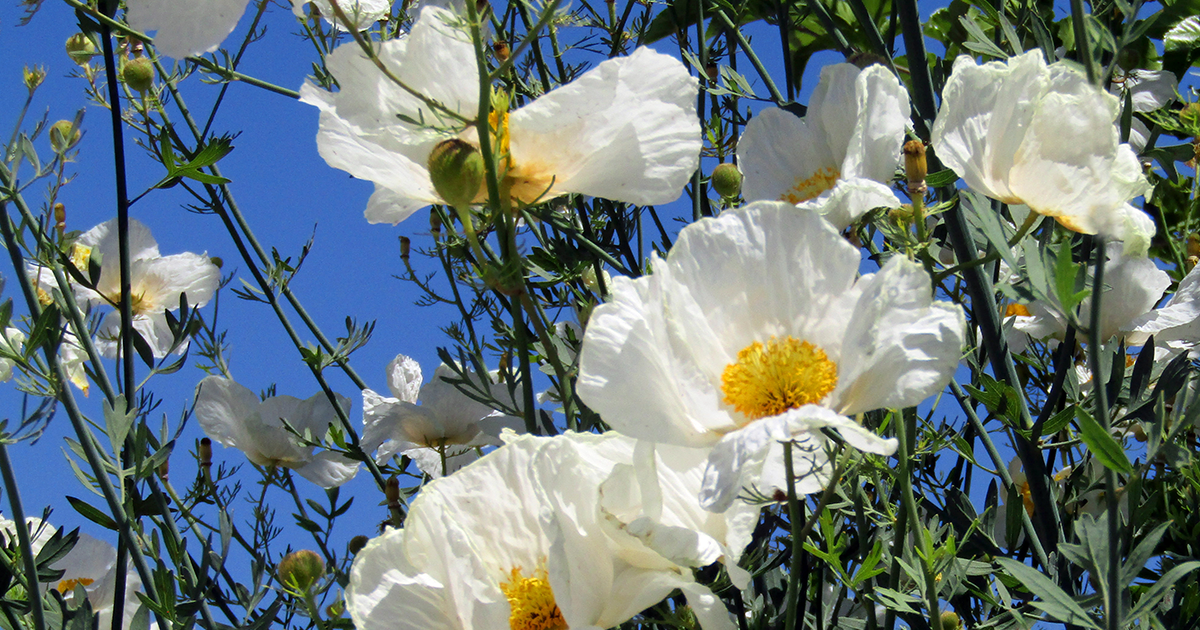
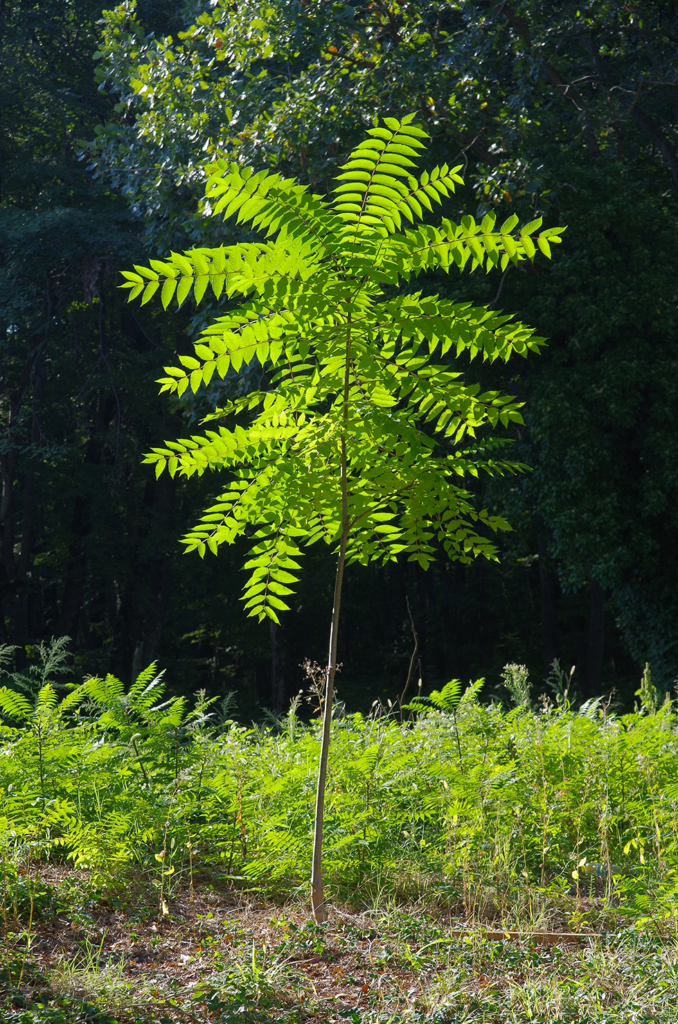 Contrary to its angelic name, the Tree of Heaven is a highly aggressive non-native tree. Luckily, it is not quite so popular in planting palettes due to its offensive smell; however, its hardiness and lack of insect or disease problems still makes it a dangerous contender for many properties. A quick reproducer, it is known to stifle or even kill native species, secreting chemicals into the soil that are toxic to surrounding plants. Largely uncontrollable, we urge anyone to consider better-smelling, native trees that are just as hardy.
Contrary to its angelic name, the Tree of Heaven is a highly aggressive non-native tree. Luckily, it is not quite so popular in planting palettes due to its offensive smell; however, its hardiness and lack of insect or disease problems still makes it a dangerous contender for many properties. A quick reproducer, it is known to stifle or even kill native species, secreting chemicals into the soil that are toxic to surrounding plants. Largely uncontrollable, we urge anyone to consider better-smelling, native trees that are just as hardy.